How Long Does It Take for Acrylic Paint to Dry: The Complete Guide
When you’re a creative person, knowing the time acrylics take to dry is essential. Acrylics are one of the most frequently used paints because it dries quickly and can be used on a variety of surfaces. In this article, we will answer some common questions about acrylic paint. We’ll also provide some tips on how to hasten the drying process. Whether you’re a novice or a seasoned artist, keep reading for all of the information you need!
What is acrylic paint?
This is a fast-drying paint that consists of pigment suspended in acrylic polymer emulsion. Acrylics are water-soluble and soluble when wet, but once dry, they become insoluble. Painters frequently use it since it may be used on canvas, wood, metal, and a variety of other materials. It’s also frequently used in model making and crafting.
It’s made up of two parts: the pigment (the color) and the binder (the acrylic resin). The binder is what makes it a “plastic” paint. It’s also what gives it that glossy finish.
The pigment is ground-up color particles. They can be natural, like mineral pigments, or man-made, like synthetic pigments. Either way, they’re very fine powders.
The binder is an acrylic resin emulsion. This means it’s a mix of tiny acrylic resin beads and water. When you add pigment to this mix, you get paint!
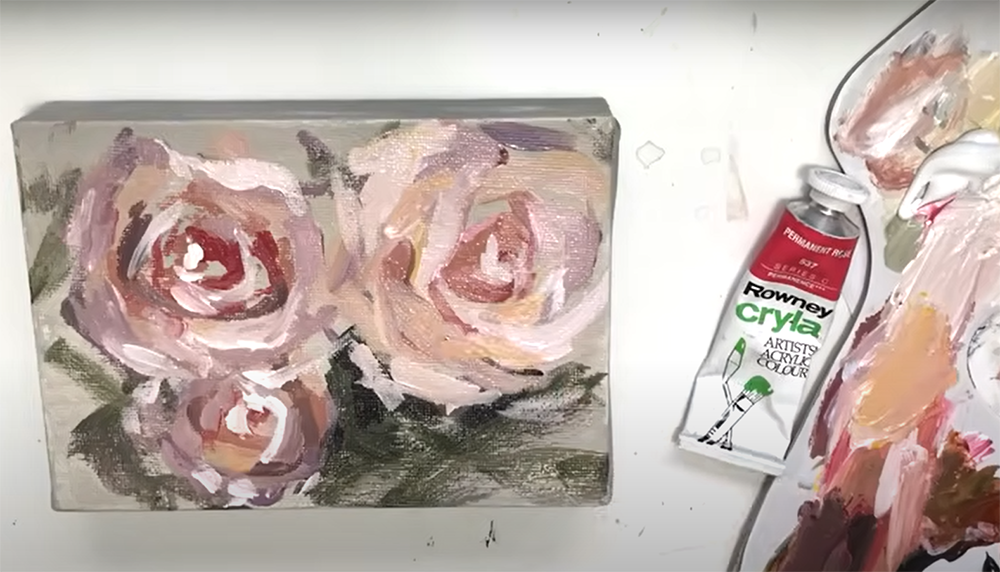
When the paint dries, the water evaporates and leaves behind the dry beads of acrylic resin. These tiny beads are what give the paint its tough, durable finish. You can use it on just about any surface.
There are plenty of colours available in acrylic paints. You can find just about any colour you can imagine. Many pastel colours are also available. [1]
Where acrylic paint can be used?
Acrylics can be used on diverse surfaces, such as canvas, paper, wood, and metal. It is also suitable for use in a wide range of art projects, from painting to mixed media.
The drying time of acrylics is determined by a number of elements, including the type of paint you’re using and the surface. Acrylics take around 15-20 minutes to dry.
Acrylics dry quickly, but there are a few things you can do to reduce the drying period, such as using a hairdryer or placing the painting in a well-ventilated area. You can also purchase fast-drying paint, which will help to reduce the overall drying time.
If you are working on a project that requires a lot of detail, then you may want to consider using oil-based paint instead of acrylic. This is due to the fact that oil-based paint dries slowly, giving you more time to work on your project. However, it is important to note that oil-based paint should not be used on all kinds of surfaces.
How Long Does Acrylic Paint Take To Dry?
There is no unified answer. It depends on a number of factors – the type of paint you’re using, the brand, the color, how thickly it’s applied, and what surface you’re painting on. Generally, acrylics take about 15-20 min to dry fully.
There are two stages to drying: The first is when the paint becomes touch-dry, meaning you can lightly touch it without leaving a mark. This usually happens within an hour or so (again depending on all those aforementioned variables). The second stage is when the paint is completely dry to the touch and won’t transfer onto anything else if you brush up against it. This can take up to 24 hours.
The Drying Times of Popular Acrylic Paints
You might be surprised to know that there is no uniform answer to this question. Acrylic paints come in a variety of colors, and thus have varying drying times. Because they are manufactured from polymers, various brands of acrylics at diverse speeds.
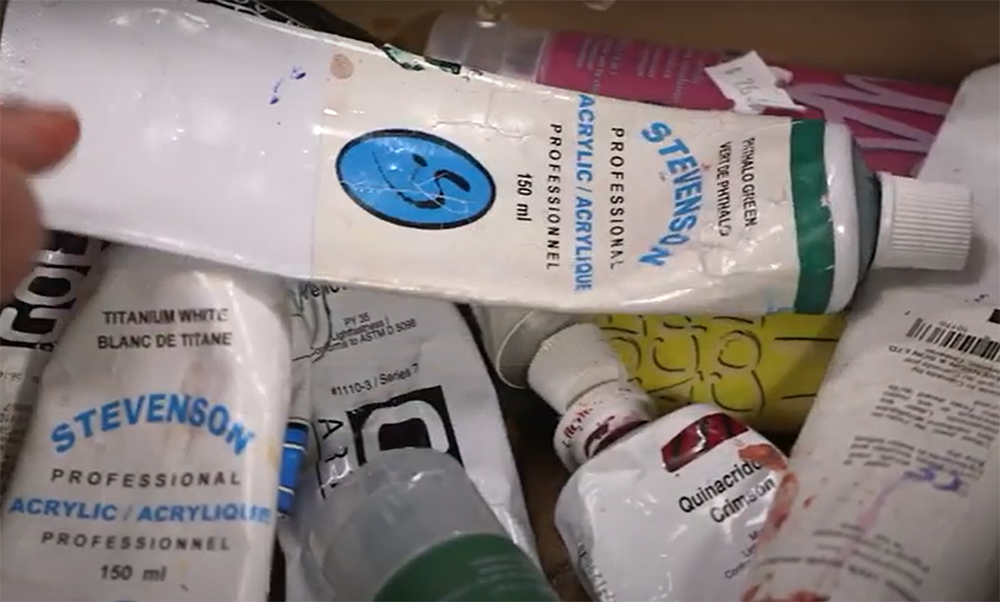
The drying time for them are:
- Golden Acrylics – 20 min to an hour
- Liquitex Basics – 30 min to an hour
- Winsor & Newton Galeria – 45 min to an hour
- Delta Ceramcoat – 30 min to two hours
- FolkArt Enamel Paint – one hour to two hours
- Amsterdam Standard Series 390 ml Tube – 60 min to two hours
What is the difference between dry to the touch and fully cured?
After the paint has dried, you will know that the top layer of paint has cured. However, the paint underneath might still be wet. Fully cured means that the paint has completely dried and set.
Generally speaking, acrylics take about 20 min to dry to the touch.
But it can take much longer for the paint to fully cure though. If you live in a humid climate, it might take several days or even weeks for your painting to completely cure. The good news is that once the painting is fully cured, it will be much more resistant to damage from things like moisture and heat.
Factors Affecting the Drying Time of Acrylic Paint
Now that we’ve established that there is no single correct answer, let’s go through all of the elements that impact drying time so you can make an educated decision the next time you’re painting.
One of the main factors is…
The type of paint you’re using – there are two main types of acrylics: student-grade and professional-grade. The primary distinction between the two is the pigment load, with student-grade having a lower concentration of pigment and professional-grade having a higher concentration. This means that student-grade paints dry quicklier because there’s less color in them, whereas professional-grade paints take more time to dry.
Another factor is…
The color is also a factor…
Because there are less pigments in lighter colors, they dry faster than darker ones. White, for example, will be one of the quickest colors to dry whereas black will be one of the slowest. This is why it’s always best to start with light colors and work your way up to the darker shades.
How thickly it’s applied…
This one is pretty self-explanatory – the thinner your application of paint is, the faster it will dry.
The surface for painting…
Different surfaces absorb paint differently. Paint dries faster on smooth surfaces like glass or metal since there is nothing for the paint to grab onto. The paint dried more slowly on rough surfaces, such as wood or canvas.
What Is the Average Time to Cure Acrylic Paint on Various Surfaces?
Acrylics dry the quickest on non-porous surfaces such as glass, metal, and varnished wood. These surfaces don’t allow the paint to penetrate, so the drying process is faster. You can typically expect acrylics to dry on these surfaces within 15 to 60 min.
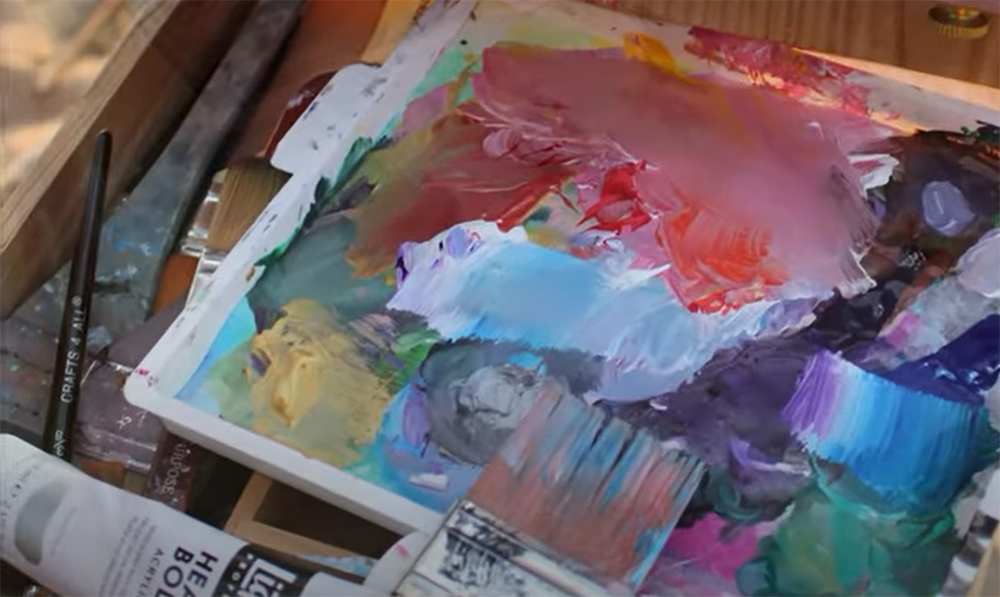
It might take a few days for the acrylics to fully dry, especially if it’s thick. If you’re in a hurry, thin your paint out with water or a drying substance. This can save you quite a bit of time.
How To Make Acrylic Paint Dry Faster?
To begin, add a drying agent to the paint. These agents are available at most art supply stores and online. They work by absorbing moisture.
On the low side or cool setting, a hairdryer may also be used. To avoid warping and discoloration, hold it 12 inches away and rotate it throughout until all surfaces are completely dry.
To hasten the drying process, place your work in front of a fan. Just be sure not to put it in direct sunlight, as this can cause the paint to fade.
If you’re looking for a quick-drying acrylic paint try Golden Open Acrylics. They have a unique formula that allows them to dry fast while still maintaining their vibrancy.
What’s the length of time between acrylic paint coats?
After 2 to 4 hours, the second coat of acrylic paint may be applied. Acrylics take 10 to 20 min to dry on a single coat. If you want to add a third coat, you’ll need to wait at least 24 hours.
How To Slow Down Acrylic Paint Drying Time?
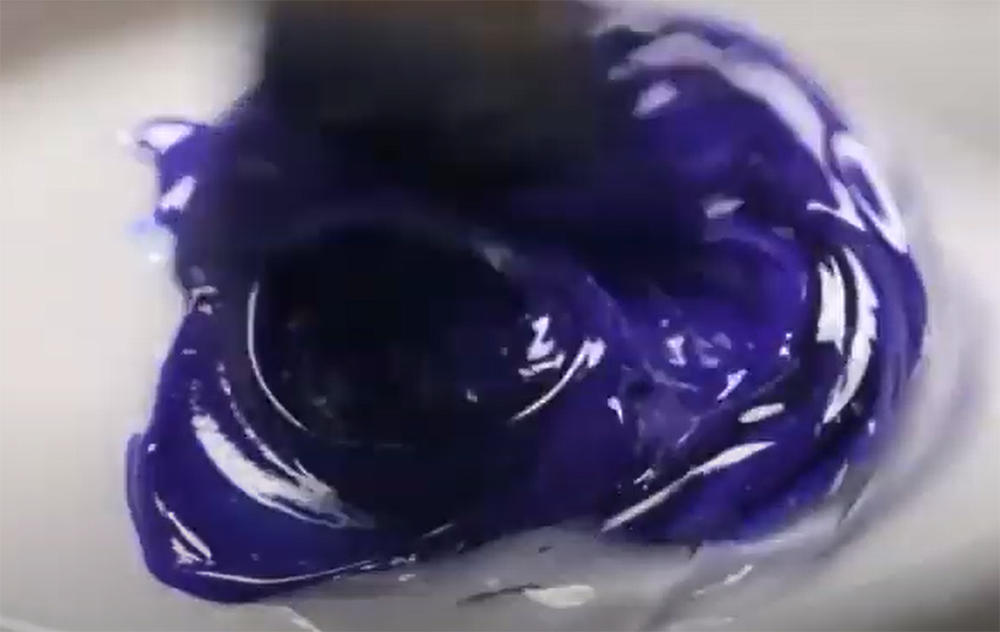
There are a few techniques for reducing the drying time of acrylics. One way is to use an acrylic retarder. This is a product that you mix into the paint before starting painting. It slows down the drying time by about 50%. Another option is to add a tiny quantity of water to your paint. This will thin out the paint and make it easier to work with, but it will also make it take longer to dry.
You can also purchase special acrylic mediums. There are even some mediums that can completely stop the drying process, which is great if you want to take your time with a painting or if you need to transport it somewhere before it’s completely dry.
Of course, one of the best ways is to simply work in cooler conditions. This means painting in a room that isn’t too hot or in the shade on a sunny day. Acrylics dry fastest when it’s exposed to heat and sunlight.
Keep these tips in mind.
Can You Paint Over Dried Acrylic Paint?
The simple answer is yes – you can do it. However, there are a few things to think about before going ahead:
- Make sure the paint has totally dried before painting over it. If it’s even slightly damp, the new paint will not adhere properly and could end up peeling off.
- Sanding the surface before painting helps create a smoother finish.
- Use a primer designed for use with acrylic paint to ensure better adhesion and durability.
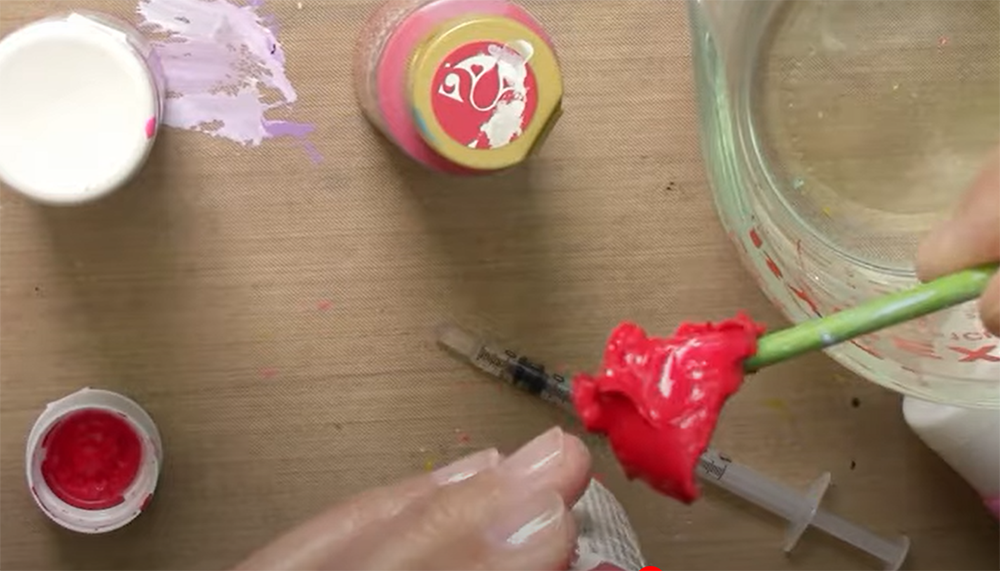
With that said, let’s take a more in-depth look at each of these points.
As mentioned earlier, it’s important that the paint is totally dry before painting over it. This means letting it sit for a minimum of 24 hours, and in some cases up to a week, depending on the thickness of the paint layer. If you try to paint over wet or even slightly damp acrylic paint, you’ll likely end up with a mess. The new paint will either not adhere properly or could start to peel off once it dries.
Sanding the surface also helps the new paint adhere better to the surface. If you’re planning on painting over a large area, you may want to consider renting a sanding machine from the home improvement store.
Finally, be sure to use a primer designed for use with acrylics. This ensures better adhesion and durability.
Let’s look at some helpful hints for painting over dried acrylic paint now.
One frequent question is whether you need to sand the surface before painting. The answer depends on the condition of the paint and your personal preference. If the paint is in good condition and you’re happy with the smoothness of the surface, then you probably don’t need to sand it before painting. However, if there are any rough spots or imperfections, sanding will help create a smoother surface for the new paint to adhere to.
Another one is what type of primer to use. Some primers can even be used as a base coat, which will save you an extra step in the painting process.
Finally, let’s talk about how to actually paint over dried acrylics. Ensure the surface is clean and free of any dirt or debris. Once that’s done, you can start painting just like you would with any other type of paint. Be sure to use even strokes and work in small sections so that the paint doesn’t start to dry before you have a chance to smooth it out. [2]
Why Acrylic Paint Doesn’t Dry
One of the reasons is because you have used too much medium. Your ratio of paint to water should be two parts paint to one part water, or less. Another reason why your acrylics could be taking forever to dry is that you have used a retarder. Retarders are meant to decelerate the drying process, giving you more time to work with it.
Another possible reason for slow-drying acrylics is that you’re using a non-porous surface. Non-porous surfaces don’t allow the paint to breathe, which in turn decelerates the drying. [3]
How long should an acrylic painting sit before the varnish is applied?
Ideally, you should wait about two weeks before varnishing. This will give the paint plenty of time to cure (harden) and reduce the risk of damaging when applying the varnish.
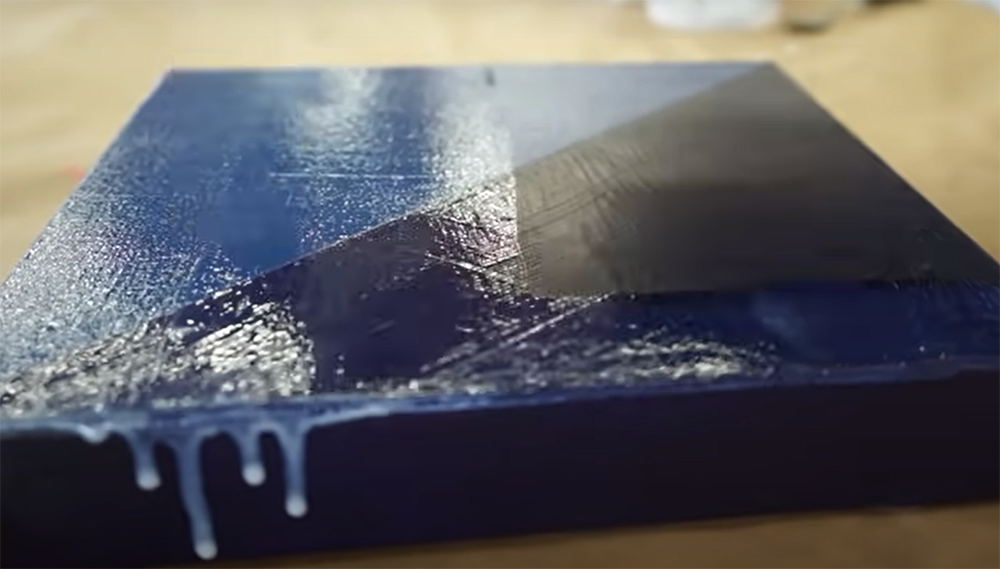
Varnishing your painting is an important step in protecting it from dirt, dust, and UV light damage. However, before you varnish your work of art, you should ensure that the paint is fully dry.
If you can’t wait that long, you can try a “forced drying” method. To do this, place your painting in a warm, dry area and apply a hairdryer to gently blow air over the painting surface. Do this for about 30 minutes, or until the paint is totally dry to the touch.
Varnishing also gives your painting a nice, glossy finish.
FAQ
How long does acrylic paint take to fully dry?
This is a difficult question to answer because it can depend on a few different factors, such as the type of paint you’re using, the climate you’re painting in, and how thickly the paint is applied. Generally speaking, most acrylics take around 24 hours to totally dry.
Some quick-drying acrylics may be ready to touch within an hour or so, but it’s always best to give them a full day to cure before subjecting them to any heavy use. [4]
Remember that even when your acrylic paint appears to be dry, it’s still vulnerable to damage from things like moisture and heat. It’s best to wait a full day before putting your painting on display or using it in any sort of project.
How can you dry acrylic paint faster?
You can try:
- Use a hairdryer on the cool setting. Hold it 12 inches away and swivel it back and forth rapidly.
- Put the painting in a well-ventilated place or outdoors if possible.
- Use fans to circulate the air around the painting. Ensure that all areas get evenly fanned.
- Use a dehumidifier to remove moisture from the air.
- If you’re in a hurry, you can use an acrylic paint dryer accelerator. These are usually sprays that you can apply to the surface of the painting. Be sure to follow the instructions on the product as they can be quite potent and may damage the painting if used incorrectly.
Acrylics generally take about 20 minutes to dry on its own. By using a hairdryer, placing the painting in a well-ventilated room, or using an acrylic paint dryer accelerator, you can get the painting to dry much faster than it would otherwise. Just be sure to take care when using any of these methods so that you don’t damage the painting.
How long does it take for acrylic paint to dry between coats?
Acrylics take an hour or less to dry once applied to a canvas. However, the curing process can take up to two weeks for full cured results. During this time, your painting will be somewhat fragile and you’ll need to take care not to damage it. Once fully cured, however, your painting will be much more durable and resistant to damage.
Does acrylic paint dry fast?
The short answer is yes, acrylics dry fast, within an hour or so. Here are a few things to keep in mind:
- The type of paint you’re using. Acrylics dry at different speeds, depending on the brand.
- The thickness of the layer. The thicker the layer of paint, the longer it will take to dry.
- The type of surface. Acrylics dry faster on permeable materials such as paper and wood, but slower on non-permeable surfaces like glass and plastic.
- The temperature and humidity of your environment. If the paint is exposed to warm, dry conditions, it will dry faster than if it is subjected to cool, humid circumstances. [5]
Acrylic paint is a great choice for projects because it’s easy to use and dries fast.
Useful Video: How Long Does Acrylic Paint Take To Dry? | The Factors That Affect the Way Acrylic Paint Dries
Conclusion
So, the time of acrylic paint drying depends on the diverse conditions. Generally, though, you can expect it to take anywhere from 15 minutes to a few hours.
If you’re in a hurry, there are a few things you can do to quicken the process. Otherwise, simply wait for the paint to dry naturally.
Hopefully, this guide has been helpful. Thanks for reading!
References:
- https://www.liquitex.com/us/knowledge/what-is-acrylic-paint/
- https://painttopics.com/how-long-does-acrylic-paint-take-to-dry/
- https://pickypens.com/a-look-at-why-your-acrylic-paint-is-not-drying/
- https://acrylicpaintingschool.com/how-long-does-acrylic-paint-take-to-dry/
- https://drawandpaintforfun.com/how-long-does-it-take-for-acrylic-paint-to-dry/


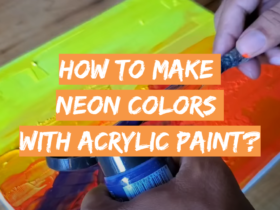
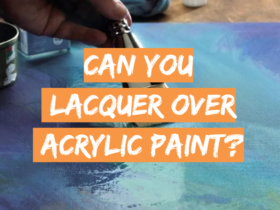

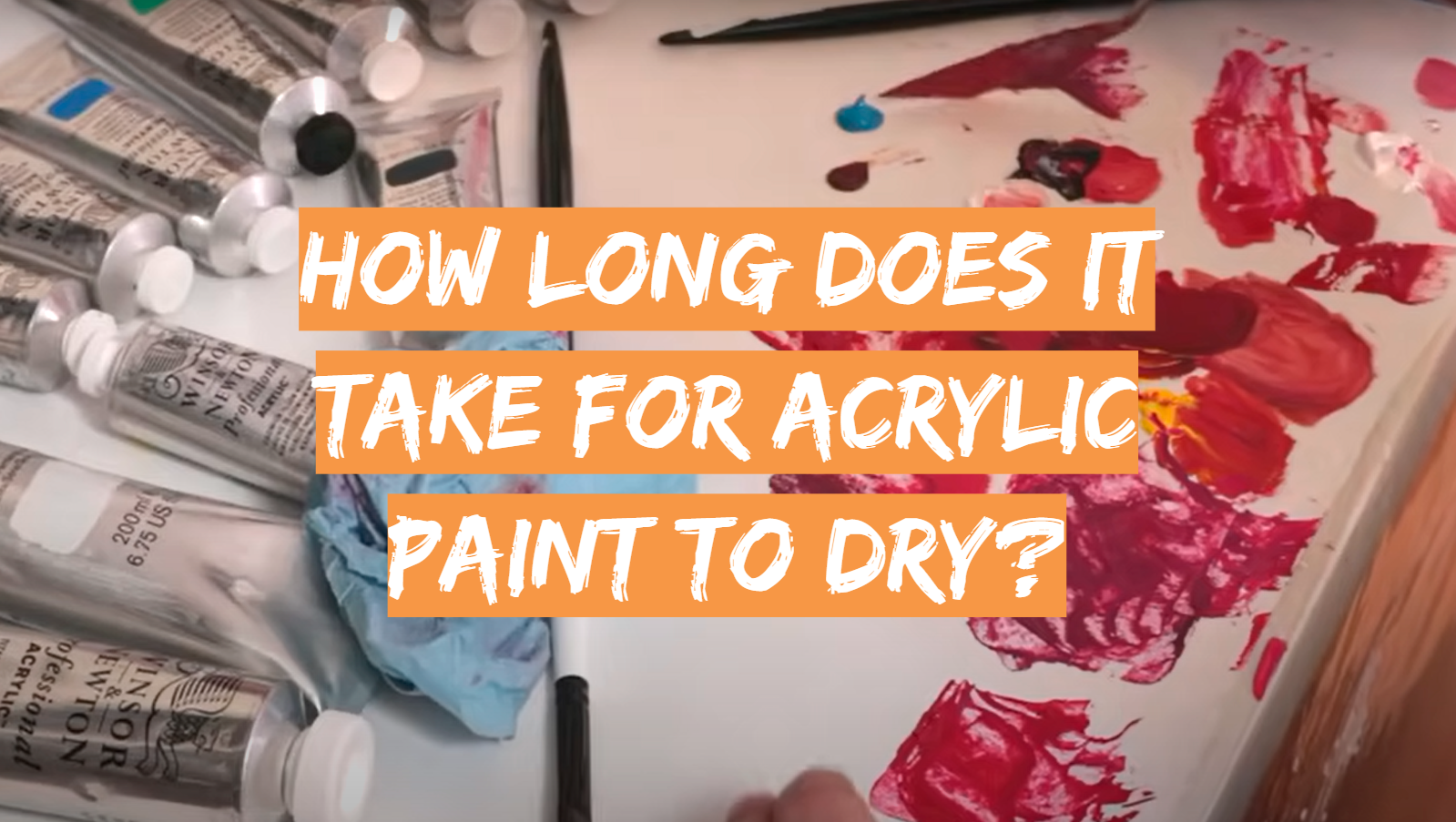


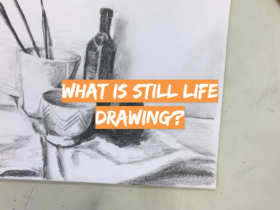

Leave a Review